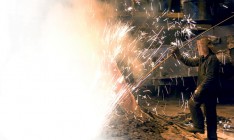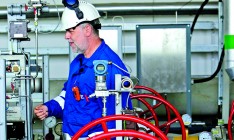Business
DiversificationUkrainian steelmakers are increasing exports to the EU and reducing deliveries to Russia

Ukrainian steelmakers are entering EU markets. Indeed, over seven months of this year Ukrainian manufacturers substantially increased earnings from the sales of construction products, namely re-bar, to the EU compared with the same period last year, according to the leading expert of the Metallurgical Complex Administration at the Derzhzovnіshіnform state enterprise Kateryna Yefymenko. While last year they sold US $3 mn worth of re-bar to the EU, this year supplies of this product brought in US $70 mn.
The amount is insignificant by industry standards, but the trend is indicative for Ukrainian steelmakers, which traditionally sell metal construction products to the Middle East and Russia. Representatives of ArcelorMittal Kryviy Rih (AMKR) told Capital that the company has indeed increased its supply of re-bars to the EU this year, namely to Baltic countries. However, they also noted that this increase was insignificant. In Ukraine, re-bar is produced by the AMKR and Metinvest’s Yenakiyevo Iron and Steel Works.
In general, the European market was quite hospitable to the Ukrainian producers, which is indicated by the data of the State Statistics Service (SSS). For example, Ukrainian iron and steel companies increased supplies of semi-finished products to the EU from 2.4 mn t (in January — July 2013) to 2.5 mn t (in January — July 2014). Earnings from the export of these products also increased, albeit slightly — from US $1.1 bn to US $1.2 bn. Over seven months of 2013 Ukrainian steelmakers supplied to the EU 949,000 t of flat-rolled steel to the tune of US $523 mn, and in January—July of this year — 1.1 mn t to the tune of US $628 mn. Industry experts believe these are fairly decent results on the backdrop of the ongoing recession in the European economy.
The side-effects of war
Revenues from the sales of metal products on European markets could have been much higher this season if it was not for the decline in production at enterprises located in the ATO zone in the Donbas region. The image of this sector was tarnished in August when the Alchevsk Iron and Steel Works (owned by the Industrial Donbas Union (ISD) corporation and the Yenakiyevo Iron and Steel Works (owned by Metinvest) were shut down. This resulted in a 30% drop in performance indicators in the industry compared to this July and a 40% decline compared to August 2013. Moreover, in July and August the Mariupol—Ilyich Iron and Steel Works and Azovstal owned by Metinvest and the Dzerzhynskiy Iron and Steel Works controlled by ISD also reduced their output. Only AMKR, Zaporizhstal (owned by Metinvest) and the Petrovskiy Iron and Steel Works in Dnipropetrovsk (owned by Russia’s Evraz) maintained their planned output.
The first half of 2014 seemed to be more optimistic. Based on its results the growth of the supply of metallurgical products to Europe compared to the same period in 2013 was 14%. Steelmakers sold 3.5 million tons of metallurgical products on these markets, notes analyst at Eavex Capital Investment Ivan Dzvinka. But in July and August sales in the EU decreased by 6%, the expert says. «The sharp decline in production caused by the unfolding hostilities in the Donbas region over this period forced steel companies to focus on fulfilling the conditions of existing contracts and manufacturing products with a higher added value (finished steel),» explained Dzvinka in a conversation with Capital.
From semi-finished products to rolled steel
Interesting is the fact that in the period July—August Ukrainian steelmakers did not increase supplies of semi-finished products to the EU, as was par for the course in previous years. After all, the daughter companies of metallurgical groups, which literally turn semi-finished materials into products with higher added value, are located in Europe. On the contrary, over the same period steelmakers increased exports of highly processed products — long and flat rolled products — to the EU. «In July-August exports of long products to the EU increased by 28% compared to the same period last year — up to 90,000 t, while supplies of flat-rolled products increased by 15% — up to 334,000 t,» said Dzvinka. At the same time, the sales of semi-finished products over the aforementioned two months dropped by 18%. Such a situation is atypical and it arises from full suspension or reduced operations of the companies, experts say.
This is confirmed by data concerning the output of enterprises. For example, the recently shut down Alchevsk Iron and Steel Works showed the highest reduction in the supplies of semi-finished products. In July and August this steelmaker reduced exports to the ISD factory in Hungary by 43% to 70,000 t compared to July—August 2013. The Yenakiyevo Iron and Steel Works curtailed supplies to Bulgaria by 34% — down to 34,000 t. Over this period, Azovstal showed a drop in exports of semi-finished products to the EU by 24% — down to 67,000 t.
Situation with supplies to Russia is even worse
While increasing exports to the EU, steelmakers cut their supplies to Russia. In the first half of the year they reduced sales of their products on the Russian market by 37% (to 1.1 mn t) compared to January—June 2013. In July—August the decline continued reaching 26% — down to 417,000 t, according to Eavex Capital.
Dzvinka attributes the reduction in the decline in sales in Russia this summer only to the low comparative base. «In August 2013, pursuing the strategy of import substitution, Russia reduced imports of Ukrainian rolled steel, mostly long products by a third compared to July 2013 — from 332,000 t to 229,000 t. And since that time the monthly export of Ukrainian steel to Russia has not exceeded 260,000 t,» says the expert. As a result, in July—August 2014 the decrease in supplies of long products to Russia was 23%. The sales volume decreased to 262,000 t. A more significant decline was observed in the supplies of flat-rolled products — by 30%, to 155,000 t.






 of the agreement of syndication with Financial Times Limited are strictly prohibited. Use of materials which refers to France-Presse, Reuters, Interfax-Ukraine, Ukrainian News, UNIAN agencies is strictly prohibited. Materials marked
of the agreement of syndication with Financial Times Limited are strictly prohibited. Use of materials which refers to France-Presse, Reuters, Interfax-Ukraine, Ukrainian News, UNIAN agencies is strictly prohibited. Materials marked  are published as advertisements.
are published as advertisements.